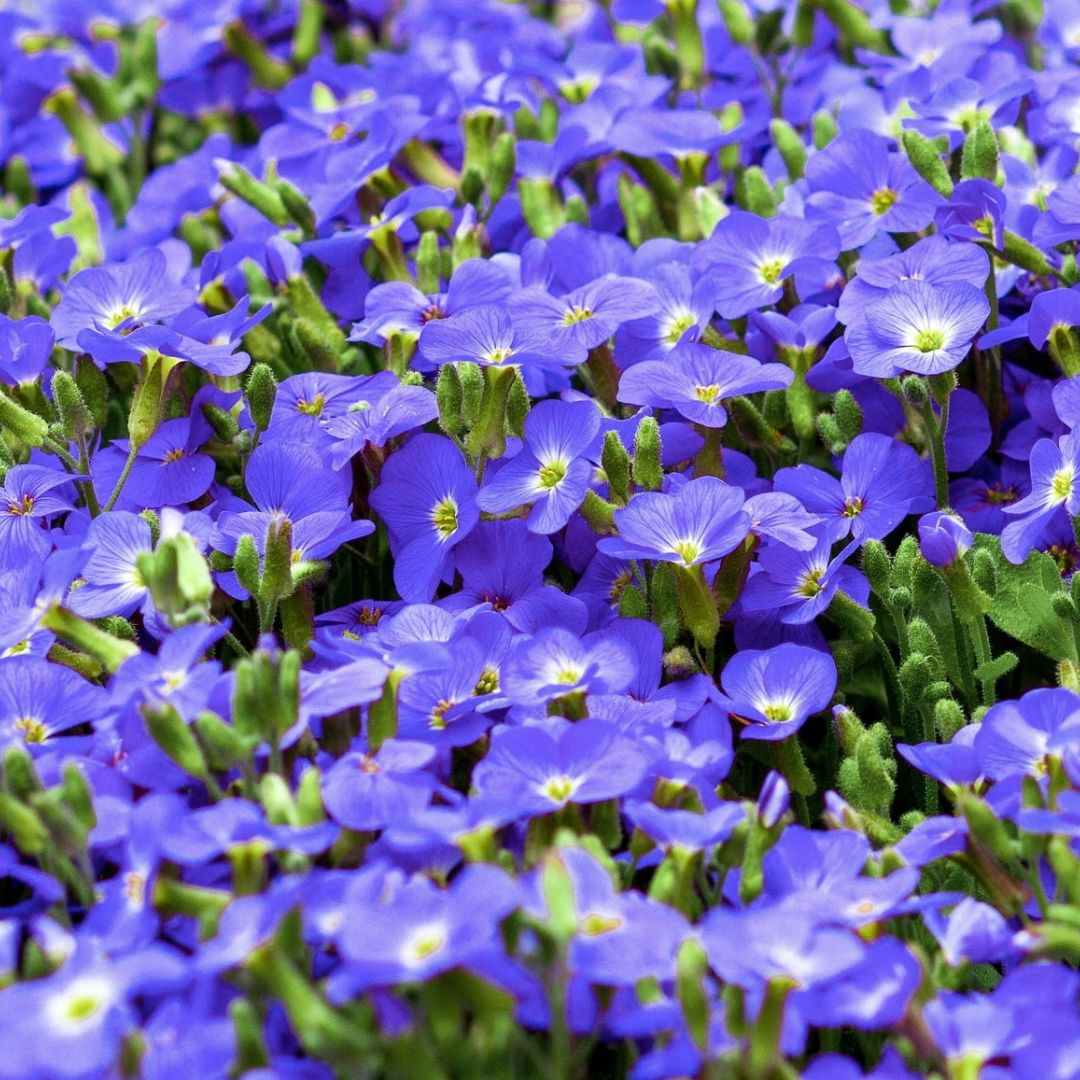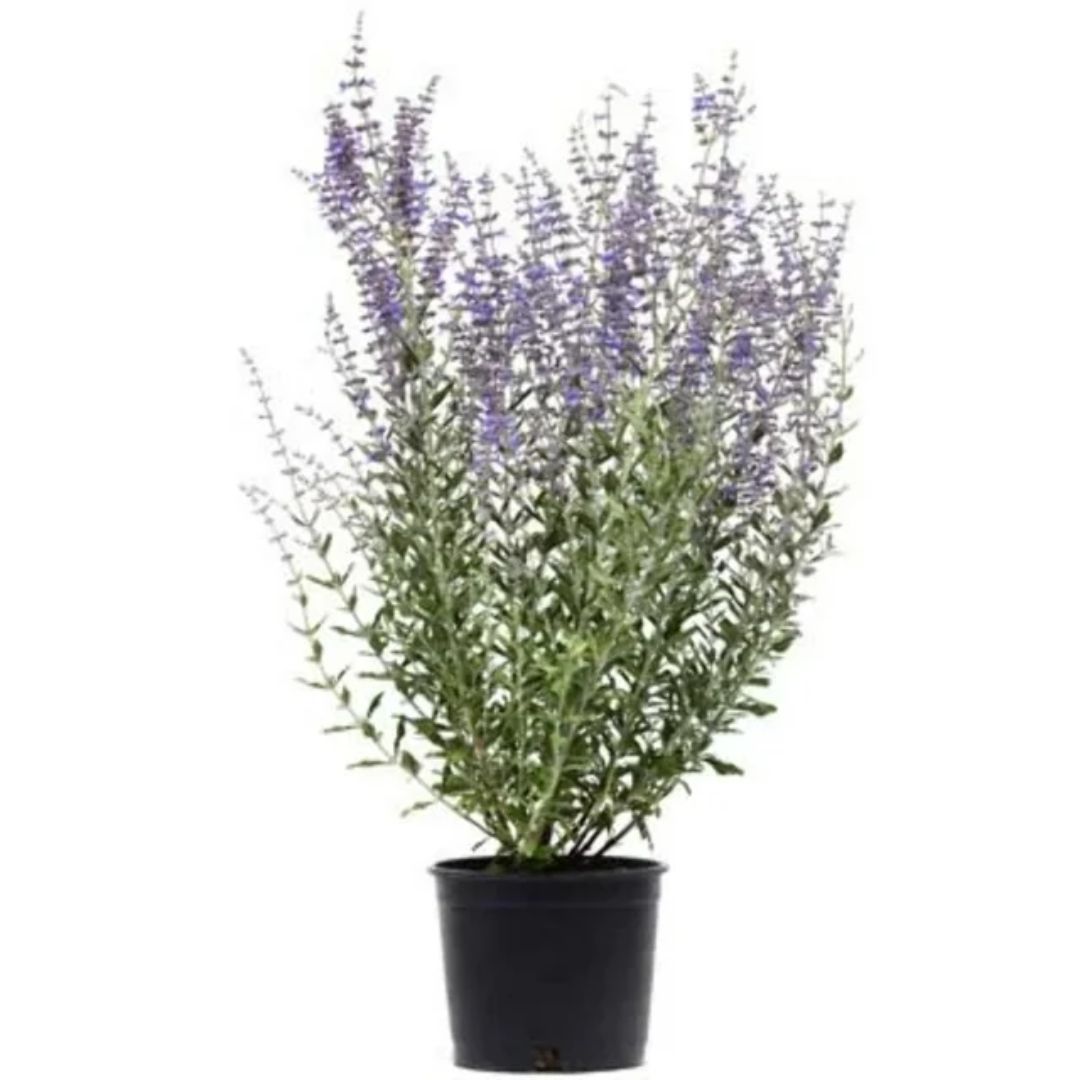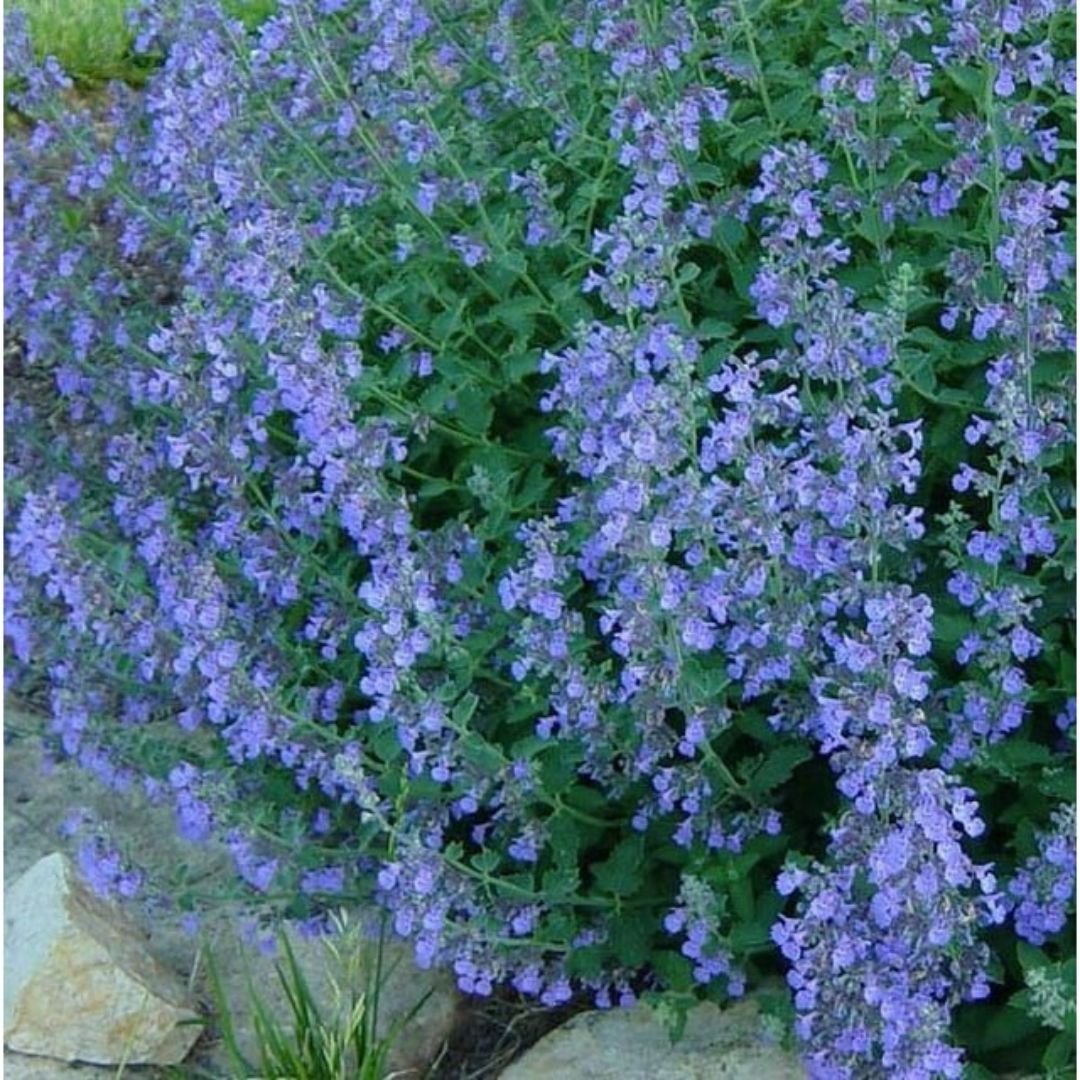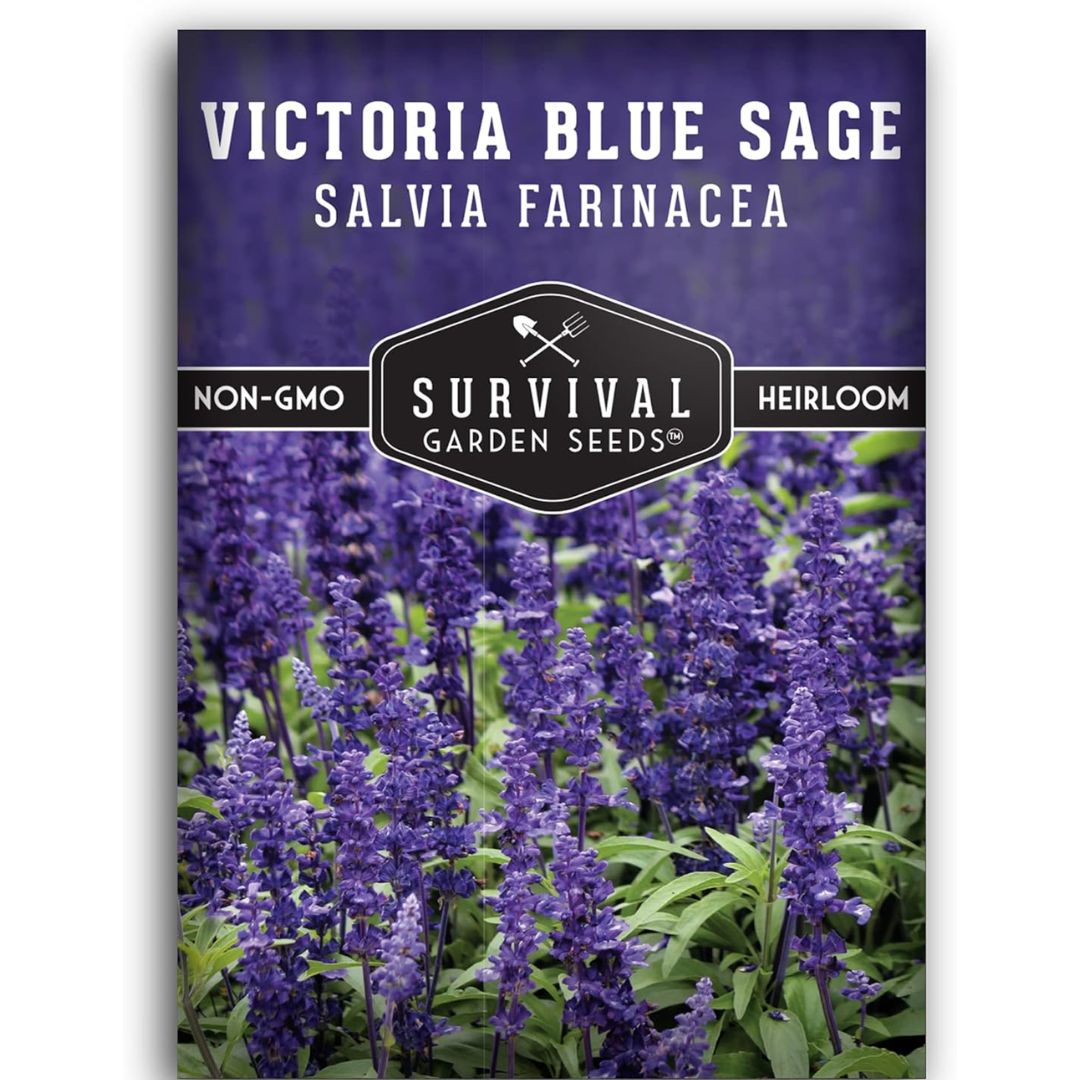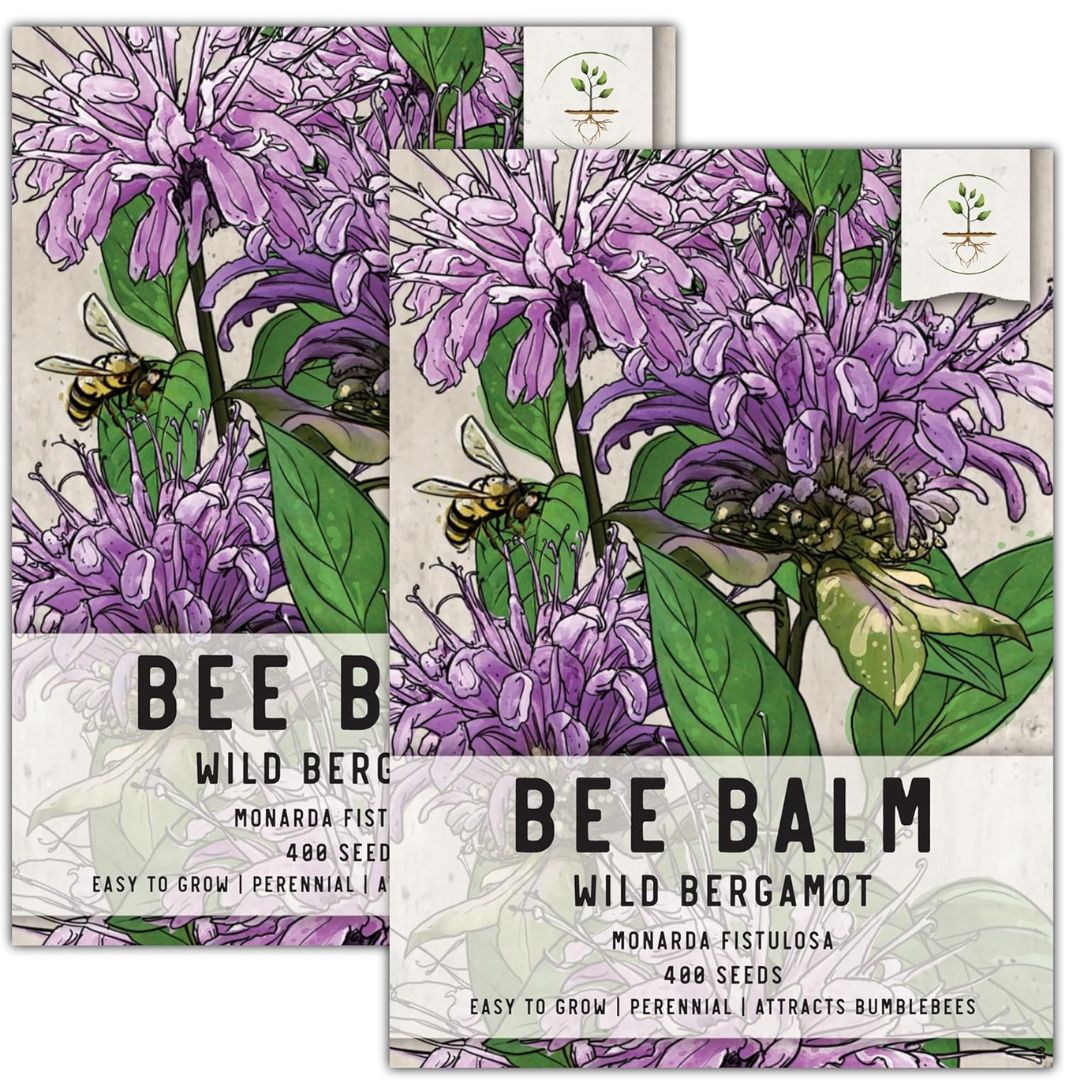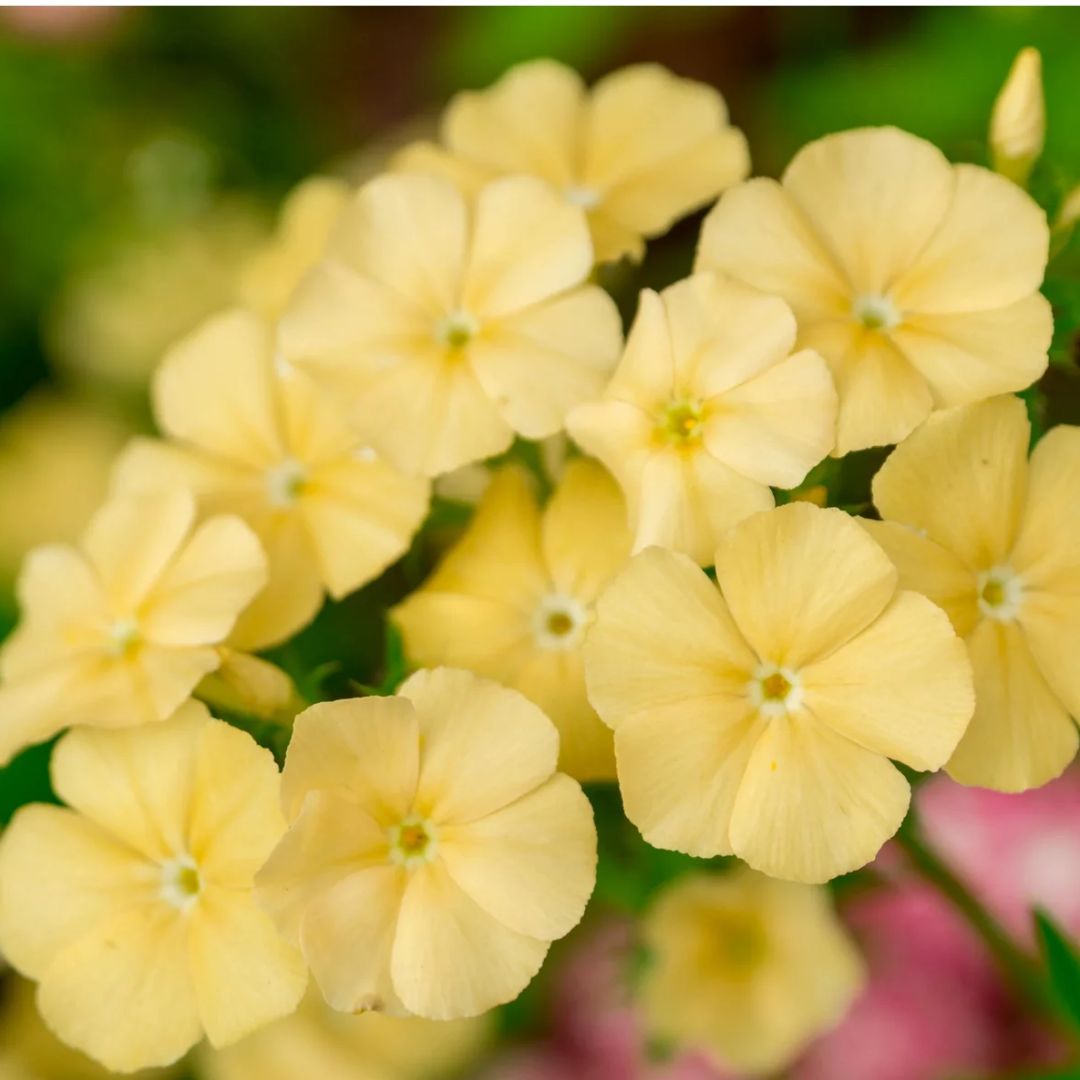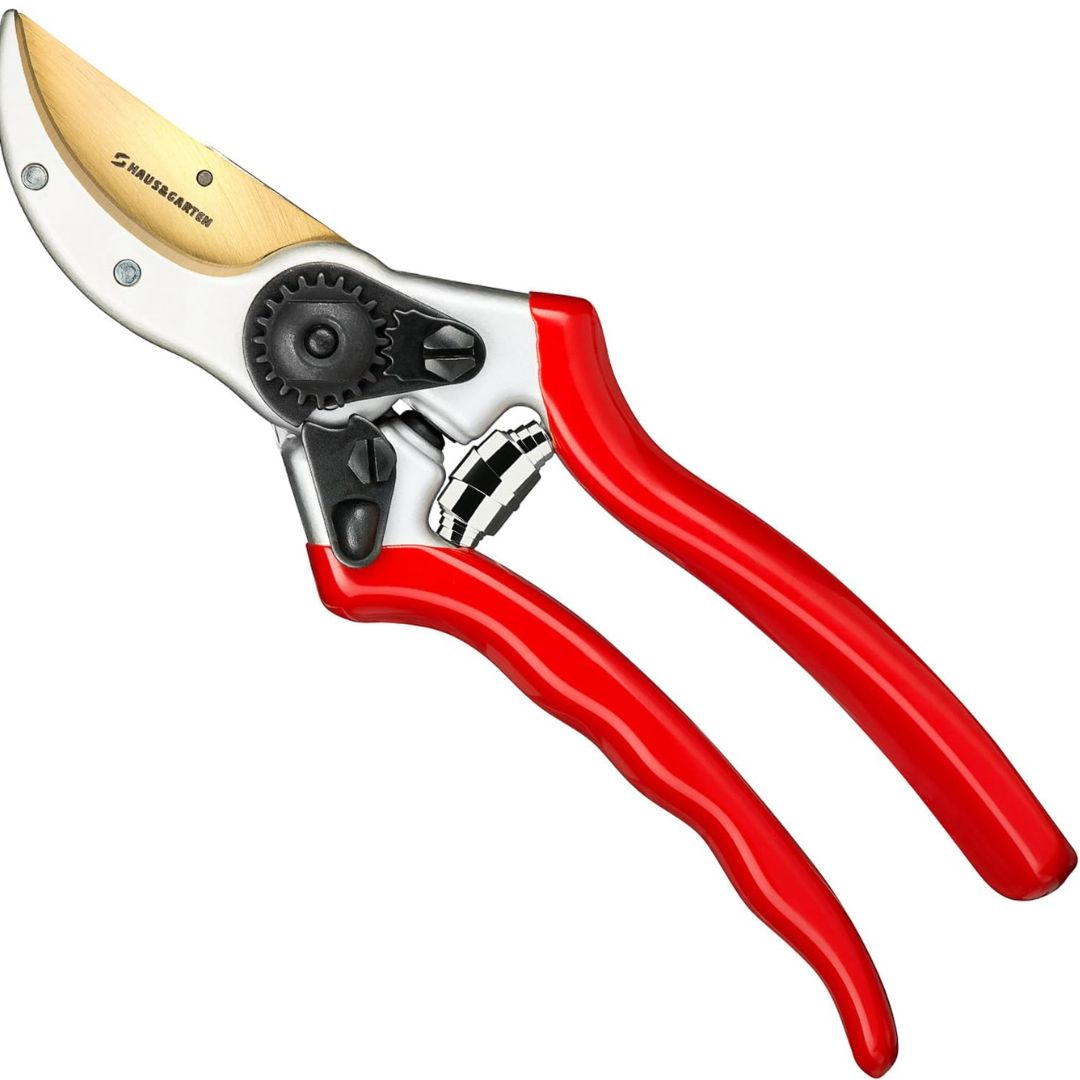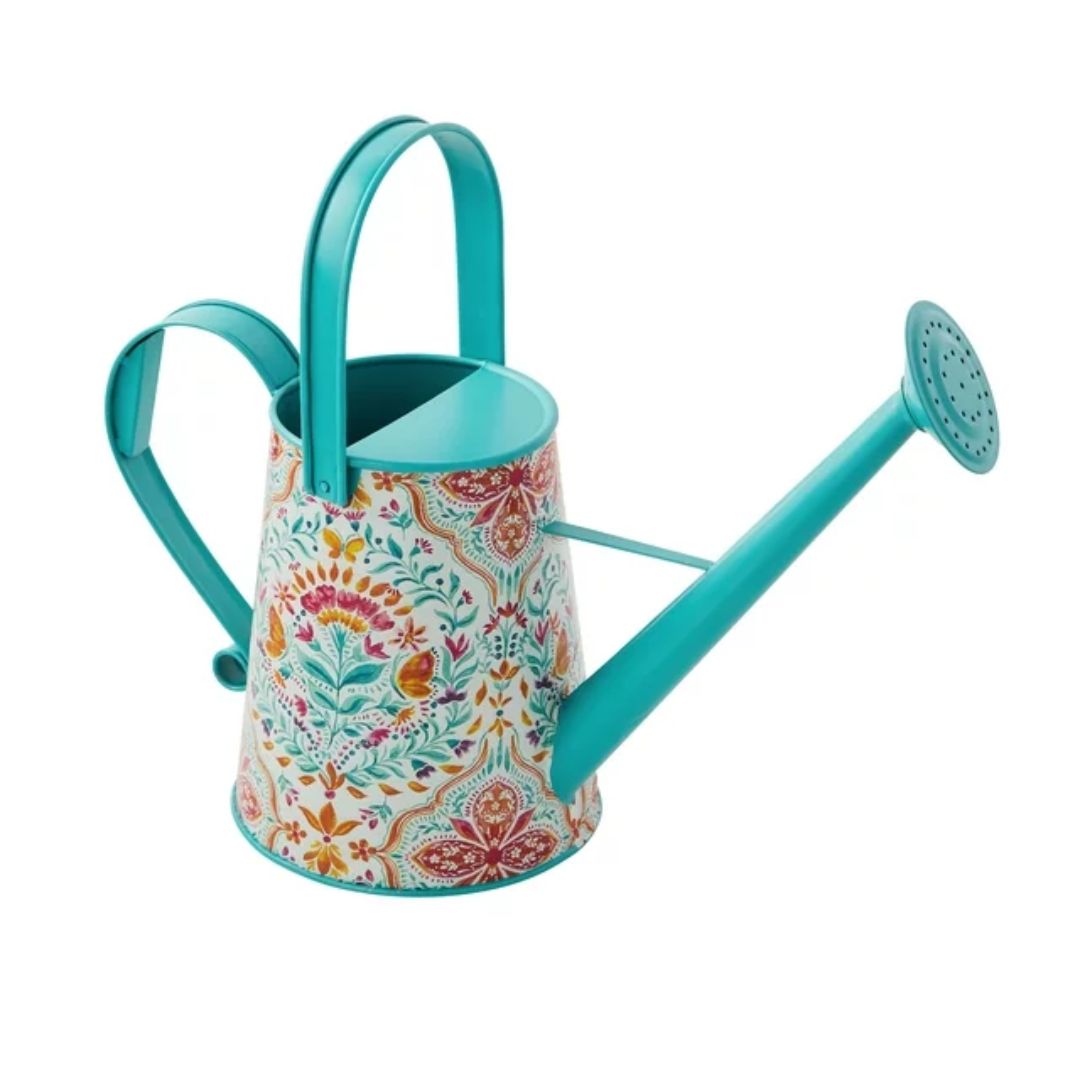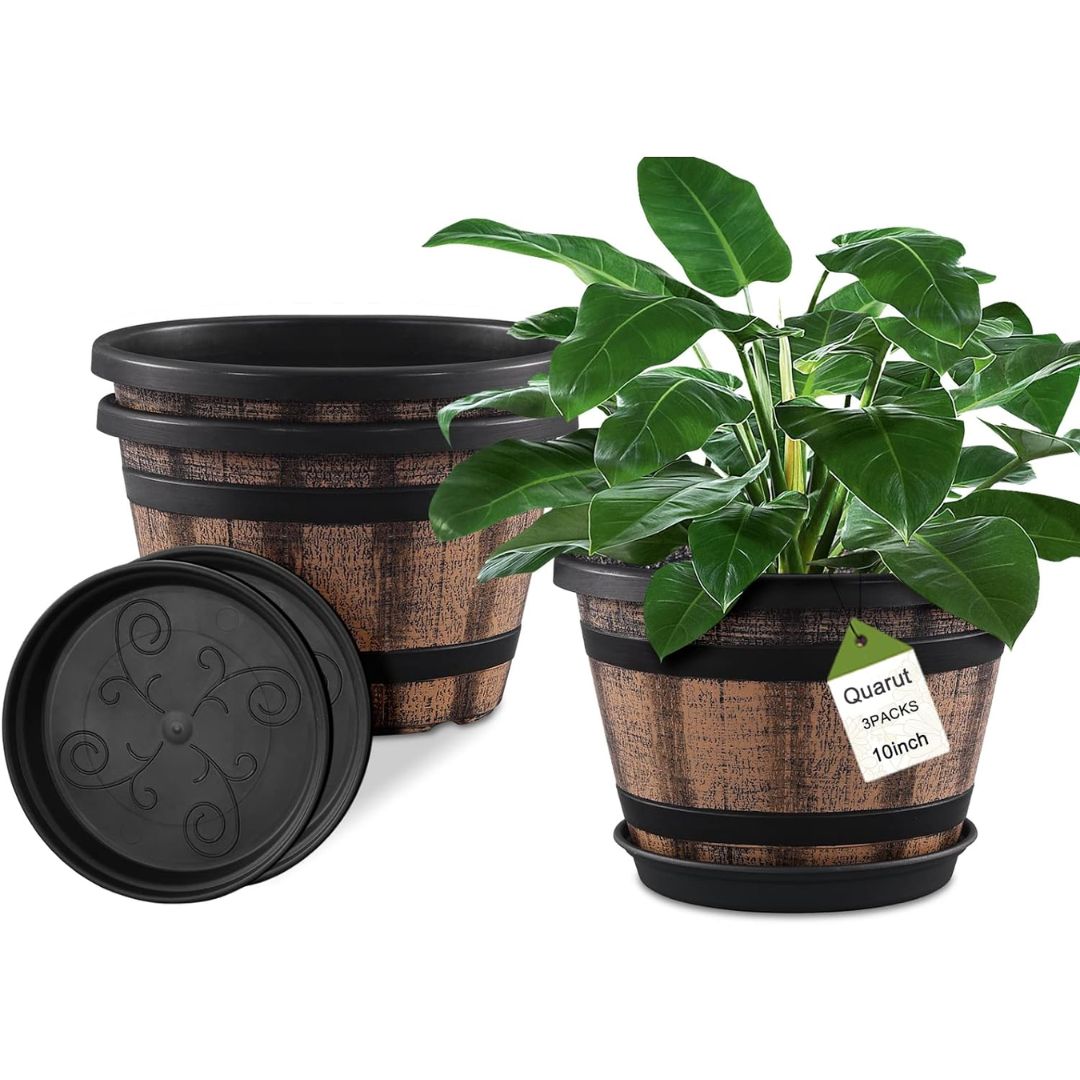Full Sun Perennials — 7 Go-to Plants That Bring Interest to Your Yard's Sunniest Spots Year After Year
Scratching your head for ideas on how to revamp your full sun yard beds? Take a look at these blooms designers say you have to have in full sun positions

Dedicating every weekend to planting and garden pottering is the dream, but realistically life can get in the way; trust us, we get it! If you’re looking at your yard thinking your time to rescue it this year has passed, the good news is you’re wrong! There are plenty of perennials that are just waiting to be planted this June and get established over the summer, just don’t wait too long.
Though annuals are a great way to add temporary color or bulk out a slow-growing bed, full sun loving perennials are the way forward for a low-maintenance yard that’s guaranteed to bounce back year after year. Unlike annuals which grow, set seed a die all in the first year, perennials will come back every year and grow with each year too, making them the perfect choice for time-poor gardeners.
To give you a head start, we’ve gone to the gardening pro to reveal the plants that top their most-wanted list for perennial plants for full sun. Shovels at the ready gardeners, there’s no time to spare!
Which perennials love full sun?
Perennial plants die back to the ground each winter, but should return the following year without much input from you as a gardener. Ones that love full sun are great for yards that don't have established gardens or trees that create shade, as you'll often find the whole yard is baked in sun during the spring and summer months.
These are the ones the gardening pros we asked love to use.
1. Veronica
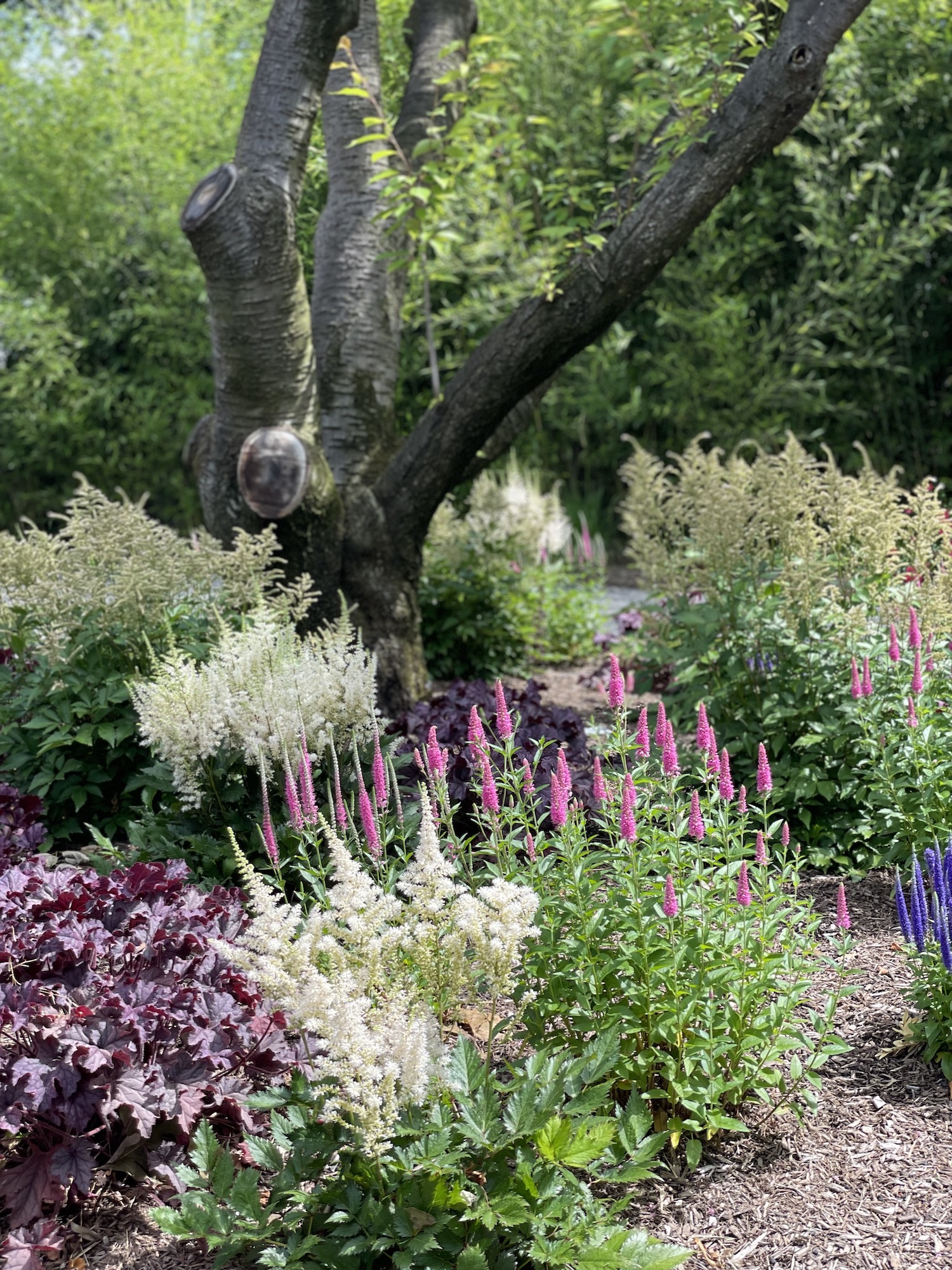
With its tall spires smothered in tiny flowers come summer, Veronica spicata (commonly called Speedwell) is instantly recognizable and a must-have for any full sun position. In fact, it’s a favorite of garden designer Laura Janney at The Inspired Garden! She says ‘Veronica is a reliable perennial with a striking texture. Deadheading encourages blooming all summer and into frost. My favorite varieties include 'Royal Candles', 'Perfectly Picasso', and 'Magic Show Purple’. Some varieties get really wild too, so if you need a bigger space to fill Veronica is a great solution!’
Veronica is available in a huge variety of colors too. “Rotfuchs” is great for a splash of hot pink color, or if you’re after a fresh clean vibe, you can’t go wrong with the delicate green and white combo in “First Lady”.
To plant Veronica, choose a spot in full sun and well-draining soil. They don’t like sitting in heavy wet soils, so bear that in mind when choosing your position. Veronica dies back to ground level every winter and reappears with fresh new growth the following spring, so don’t be concerned if your plant disappears when the temperatures drop.
Hardiness Zone: 3-11 USDA
Sun exposure: At least 6 hours of full sun
2. Coneflower

Adding a touch of color to your herb garden ideas, echinacea, more commonly known as coneflower, is the perfect perennial for gardeners looking to help the local bees and butterflies and even take advantage of their edible flowers!
Expert Laura says ‘Coneflower is a hardy flower and a staple in any of our yards. I love the texture and the pop of color it brings. Coneflower comes in many different heights and colors. The varieties I love are “PowWow Wildberry”, “Grenada Gold”, and “Raspberry Truffle”. Plus, when it comes to low-maintenance but long-lasting blooms, coneflowers are hard to beat! ‘Coneflower is a fantastic pollinator and a prolific bloomer. Once it starts blooming it could last all the way into frost,’ says designer Laura. ‘When the plant has finished blooming you can cut it down to the stem, or alternatively, many people do nothing at all and leave the seed heads for the birds over winter.’
These fancy flowers don’t just look good in the garden though, they’re also a great edible flower for homemade herbal teas!
Hardiness Zone: 3-9
Sun exposure: 6-8 hours of sun per day
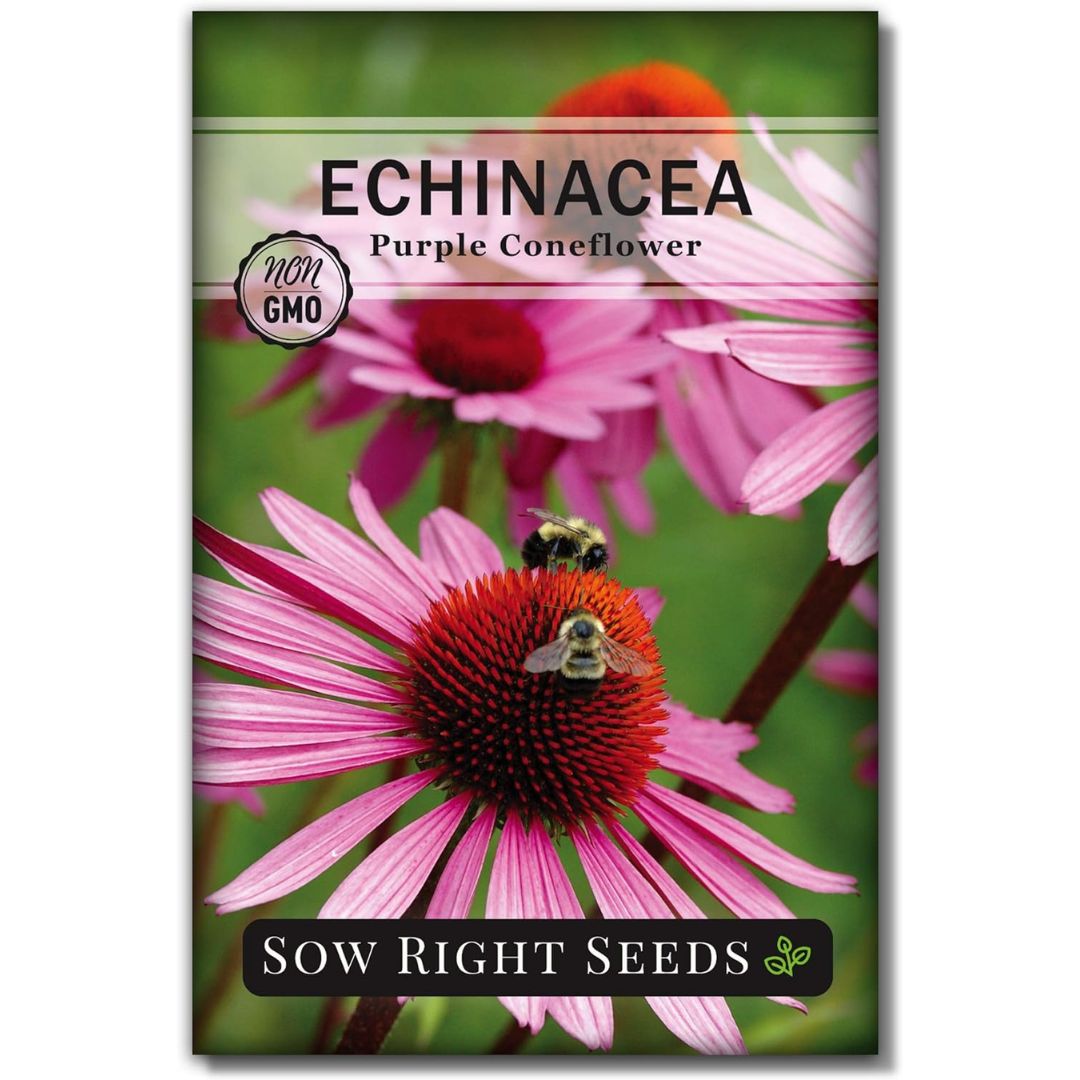
Price: $4.99
Seed amount: 750mg
3. Russian Sage

A staple of plants that like full sun and heat, Russian Sage is essential if you’re after a paired-back, delicate flower for your full-sun beds. ‘What I love about Russian Sage is that the soft, delicate blooms are a lovely contrast to other more striking flowers in the garden. It’s also a great pollinator, makes a beautiful cut flower, and smells delicious,’ says garden designer Laura. ‘I like to use “Denim ‘n Lace” and “Blue Jean Baby” because they are more compact and aren’t prone to flopping over.
This plant loves full sun and does especially well by the coast in dry, chalky soil and the sea air. Plus with most varieties proving themselves to be fully hardy, it’s a great choice for areas that experience harsh winters too.
Hardiness Zone: 4-9
Sun exposure: 6-8 hours of full sun
4. Catmint
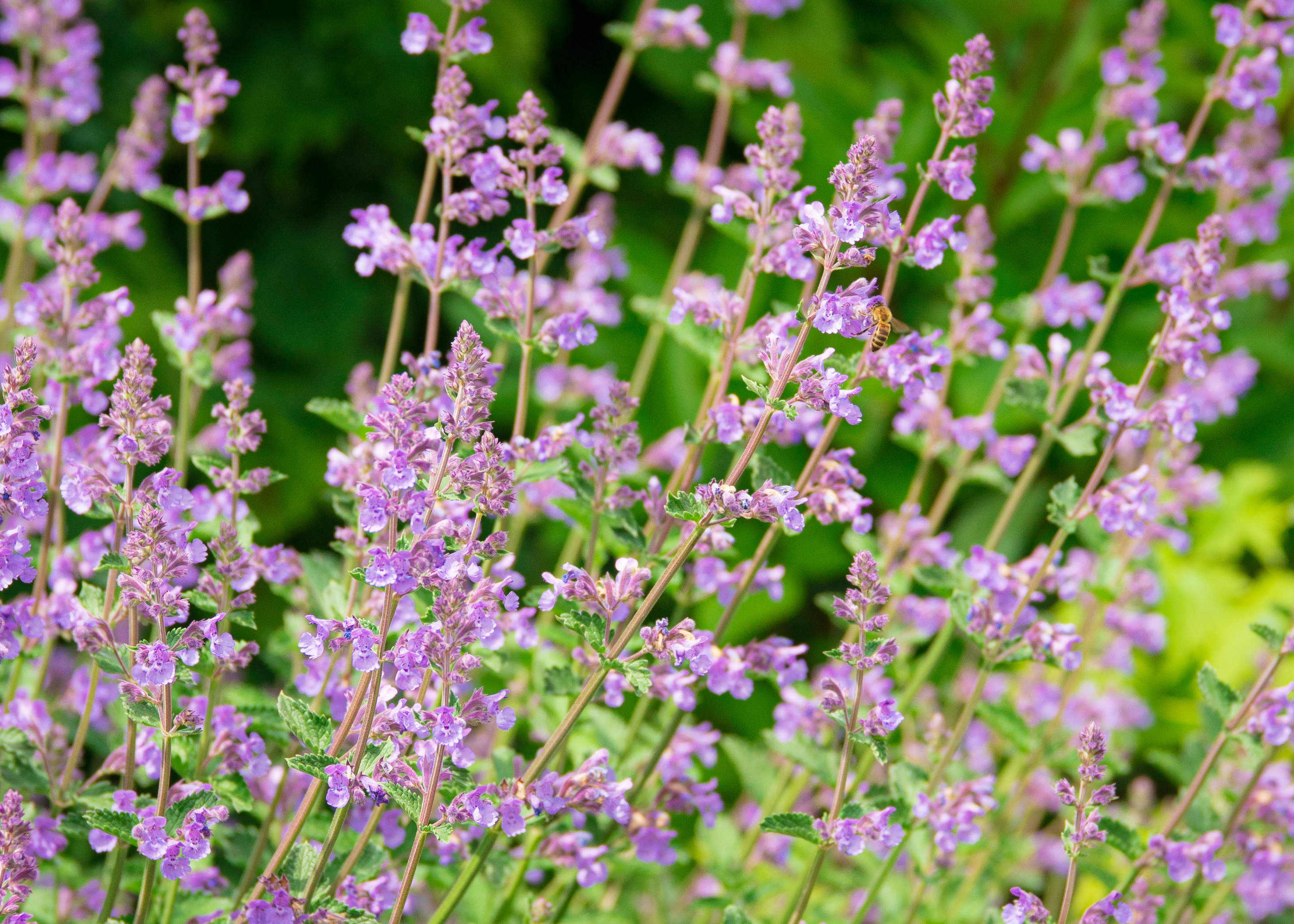
Keeping to purple-flowering favorites, next on Laura’s must-have perennial list is Catmint.
Don’t worry, this plant isn’t invasive like other culinary mint plants though, so you won't need to worry about taking extra measures on how to stop mint from spreading. In fact, Catmint is so easy to grow it’s one of our top picks for low-maintenance perennial gardens.
Expert Laura says ‘Catmint is a reliable and low-maintenance perennial. One of my favorite varieties is “Cat’s Pajamas.” It has a light, dusty-green foliage growing in soft spikes filled with tiny purple blooms. For larger varieties that will spread over larger bare spots in your yard look for “Walker’s Low”, or for a border plant look for smaller varieties like “Little Trudy”.'
Though it might seem counterproductive, cutting your catmint back after its first bloom will actually encourage repeat flowering and bushier growth. Designer Laura explains ‘After the first blooms have faded, simply cut back the plant to encourage it to bloom throughout the summer.’ We’d recommend a good pair of Japanese bypass secateurs for the job!
Hardiness Zone: 3-8
Sun exposure: 6 hours of full sun per day
5. Salvia
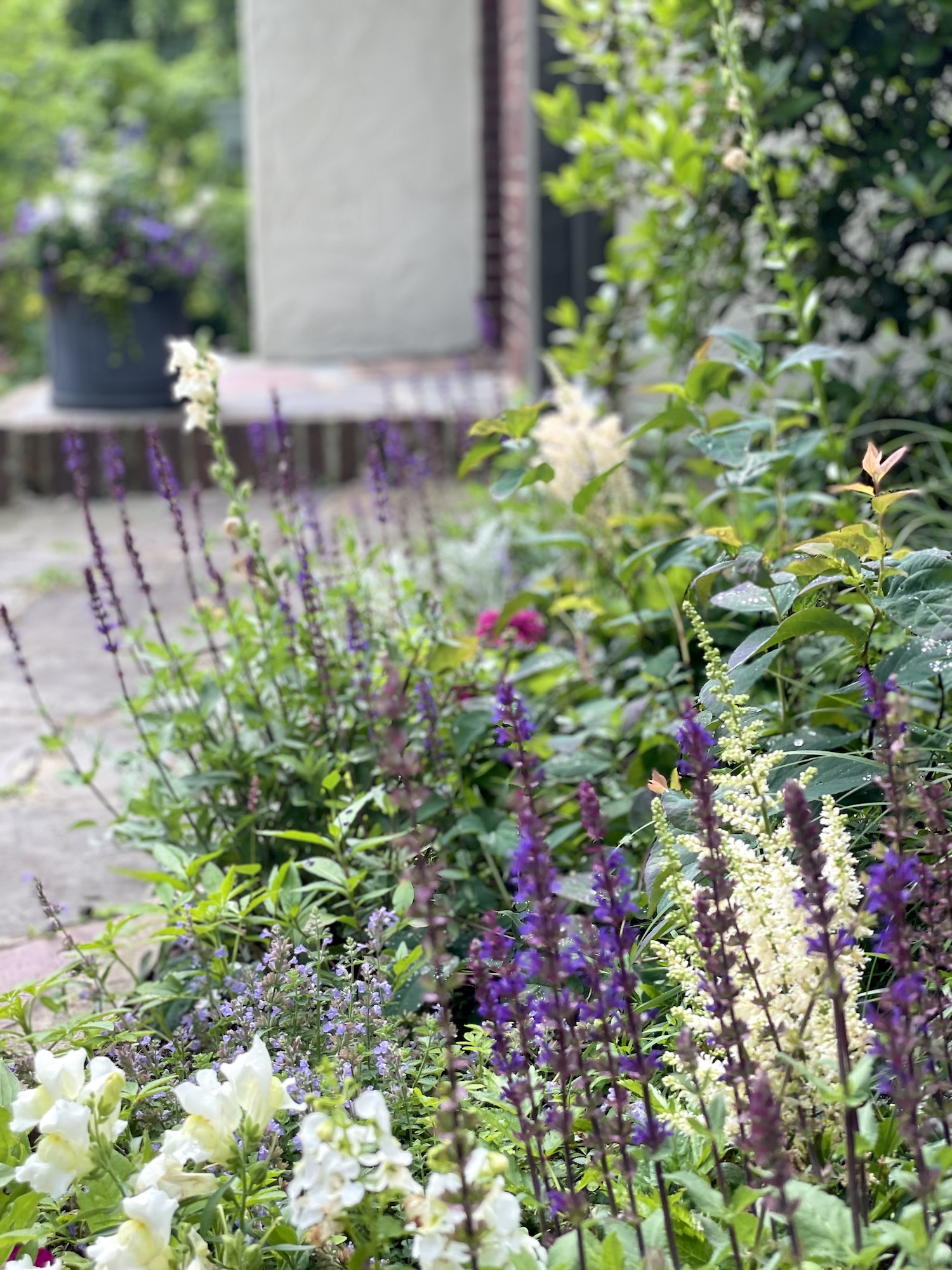
Tall spires and dainty flowers? The salvia is a great Mediterranean garden plant that will give your backyard a splendid vacation feel.
The perfect fit for well-draining soil in full sun, salvia’s early spring color make this plant a favorite of garden designer Laura. She says ‘Salvia is a wonderful plant because it’s hardy, reliable, and an early spring bloomer. It’s great to have some color when most of the perennials haven’t bloomed yet. I love how the spikes contrast with the roundness of the other blooms.’
Plus, in Laura’s opinion, salvias look great even after blooming. ‘I love the texture of salvia’s spent blooms. You can cut it down and it will bloom again later on in the summer but it won’t be as prolific as the first bloom. Some of my favorite varieties are “Caradonna”, “Bumblesky”, “May Night”, and “Rose Marvel.”
But if your early spring planting is under control, late blooming salvia like Salvia patens “Beyond Blue” is a great choice. Its powder blue blossoms add beautiful icy highlights to yards right through until Halloween!
Hardiness Zone: 5-9
Sun exposure: At least 6 hours of sun
6. Bee Balm

Bee Balm, Monarda, Bergamot, Horsemint – just a few names for this outrageously fun full-sun perennial. Far from subtle, Bee Balm is all about loud colors and whimsical petals. It’s a fantastic centrepiece plant for sunny spots in your yard beds. Plus, as its name suggests, it’s a magnet for pollinators like bees and butterflies!
For expert Laura, Bee Balm’s unique appearance makes it a true winner in well-draining yards. She says ‘Bee Balm is another hardy perennial that gives a burst of color. Although it has a relatively short bloom time, its vibrant blooms are worth it. I like “The Sugar Buzz” series, as it has more compact growth and bold blooms.’
A native wildflower of North America, Bee Balm is naturally quite a low-maintenance perennial. But to keep your Bee Balm looking its best Laura says ‘Be sure to deadhead the spent blooms and cut back the stems after flowering to encourage new growth and prevent self-seeding.’
Hardiness Zone: 4 – 9
Sun exposure: At least 6 hours of direct sun
7. Phlox

Bright blooms with sunny borders, what’s not to love? If you want to make a splash and do more with your flower beds with year-after-year summer colors, then phlox is your best friend. ‘Phlox is a wonderful long bloomer,’ says gardening expert Laura. ‘My preferred varieties are “Laura”, “Nicky”, “Volcano Phlox Purple”, and “David”. Blooms start in early to mid-summer, and with deadheading it will last until frost. It’s a great pollinator and makes a wonderful cut flower too!’
Disease can be the Achilles heel of these gorgeous flowers though, as expert Laura highlights. ‘Phlox can tend to get mildewy, but I feel it’s worth it because the blooms are so special. If the mildew bothers you, you can spray with a copper fungicide.’
Hardiness Zone: 4-8
Sun exposure: About 6 hours a day
Heat tolerant perennials are a great way to add colorful blooms to your backyard. Perennials are worth every penny and end up blooming for years once they've established. So if you're looking for plants that won't dry up under the sun, then check out the list of blossoming beautifies above.
What is a full sun perennial?
A perennial plant is one that, while it has seasons of growth, comes back year after year, compared to an annual that you plant once, but dies with the onset of winter and doesn't return. A perennial might not last forever, but if it lasts two years or more, then it's likely considered a perennial.
Full sun is a gardening term that refers to areas of your yard that receive significant amounts of direct sunlight a day. Plants that like full sun are those that want at least 6 hours of direct sunlight a day during their key growing periods. This may be easier in the summer, when the sun is higher in the sky.
Our top 3 plant care tools
Be The First To Know
The Livingetc newsletters are your inside source for what’s shaping interiors now - and what’s next. Discover trend forecasts, smart style ideas, and curated shopping inspiration that brings design to life. Subscribe today and stay ahead of the curve.
Matilda Bourne is a freelance homes, gardens and food writer, stylist and photographer. Known for creating and capturing content for multiple international brands, her work has been featured in The Telegraph, The Daily Mail, and Hello! magazine. When she’s not writing, you can usually find her tending to her much-loved garden and scouring thrift stores for vintage furniture.
-
 The 'New British' Style? This Victorian London Home Embraces Its Owners' Global Background
The 'New British' Style? This Victorian London Home Embraces Its Owners' Global BackgroundWarm timber details, confident color pops, and an uninterrupted connection to the garden are the hallmarks of this relaxed yet design-forward family home
By Emma J Page
-
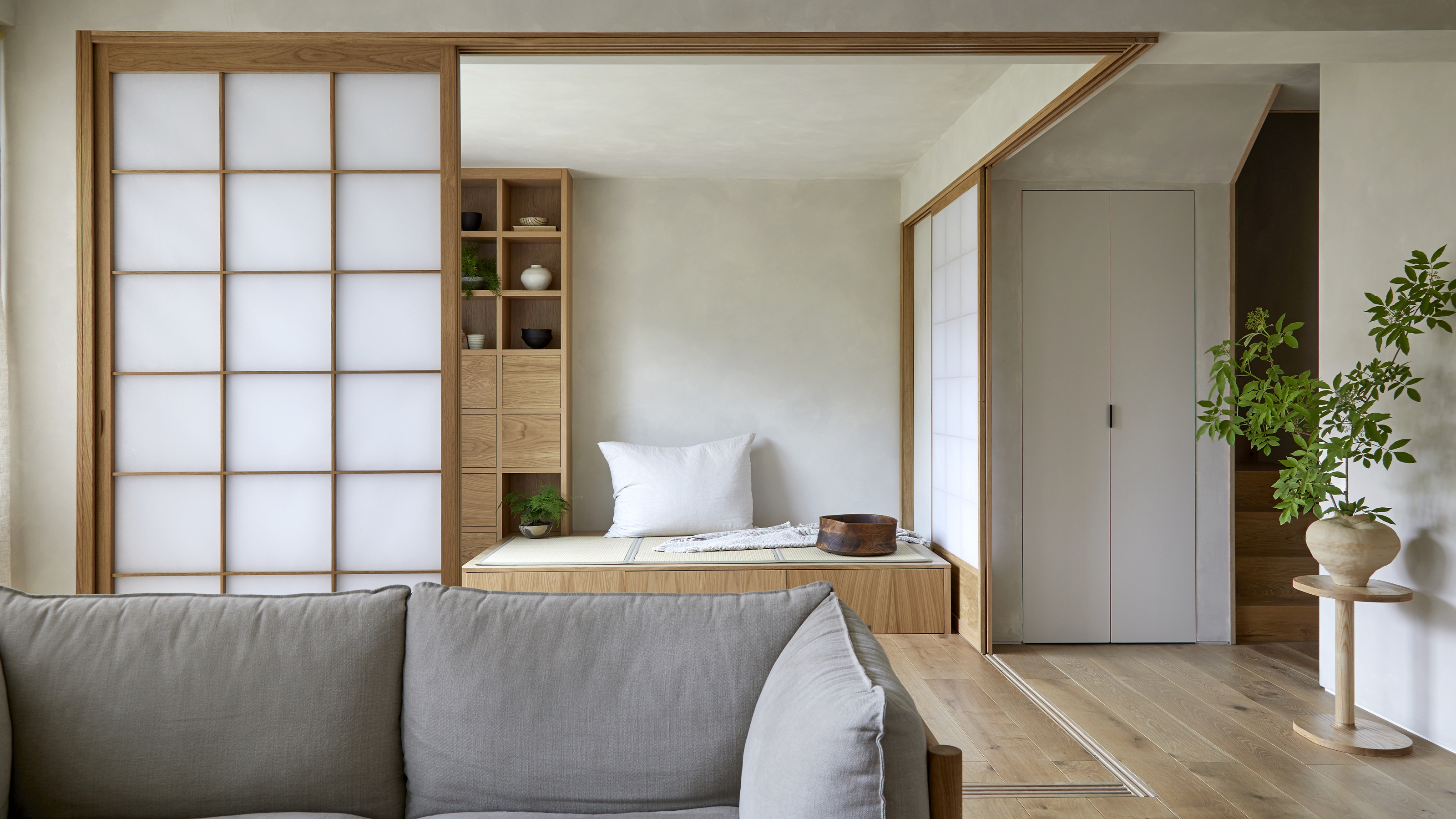 Muji Living Room Ideas — 5 Ways to Harness The Calming Qualities of This Japanese Design Style
Muji Living Room Ideas — 5 Ways to Harness The Calming Qualities of This Japanese Design StyleInspired by Japanese "zen" principles, Muji living rooms are all about cultivating a calming, tranquil space that nourishes the soul
By Lilith Hudson
